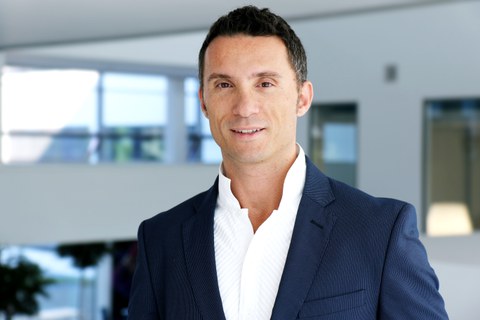Nov 20, 2018
Do interactions in molecular and cellular networks follow the same organization principles as human social interplay?
A Researcher from TU Dresden Biotechnology Center found impressing analogies
To decode the underlying laws that govern the organization of life into molecules, cells and tissues are the great scientific challenges of our time. Dr. Carlo Vittorio Cannistraci from the Biotechnology Center (BIOTEC) at the Technical University Dresden, Germany, explored the question whether brain cells interact in the same manner as molecules within a cell and published his findings in the science magazine Nature.
He found that the self-organization within these two systems follows the same principles – regardless the size of the structures and independent from what body functions they support. He codified those complex interactions in a mathematic model that is able to predict protein molecule interactions within the body under changed conditions.
”With the help of that model, also the quality of experimental findings increase as sources of error now can be purified. Furthermore, the principles of protein self-organization that I found are suitable to describe any class of complex networks and can impact many applied domains such as systems biology and network medicine. They potentially can even describe interactions of humans within social networks”, says Dr. Carlo Vittorio Cannistraci who serves as head of the Biomedical Cybernetics group at the TU Dresden Biotechnology Center. Dr. Cannistraci will continue to focus on that aspect – finding out to which extent human interactions in social networks follow the same law as cell and molecule interplay, and will put his future research efforts on the further decoding of topological rules behind soft-matter self-organization.
Publication:
Modelling self-organization in complex networks via a brain-inspired network automata theory improves link reliability in protein interactomes.
Carlo Vittorio Cannistraci
Scientific Reports 2018; www.nature.com/articles/s41598-018-33576-8
Support to this study was provided by the Center for Molecular and Cellular Bioengineering (CMCB) of TU Dresden (Germany), the Center for Systems Biology Dresden (CSBD, Germany), the Department of Physics of TU Dresden (Germany) and the Brain bio-inspired computing (BBC) lab of the IRCCS Centro Neurolesi “Bonino Pulejo” in Messina (Italy). Funding was provided by: the Independent Group Leader Starting Grant of the BIOTEC at TU Dresden; the German Research Foundation (DFG) and the Open Access Publication Funds of the TU Dresden.
Media Inquiries:
Dr. Carlo Vittorio Cannistraci
Tel.: +49 351 463-40080

